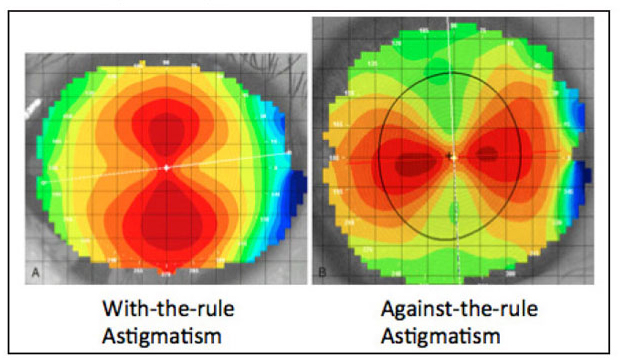 |
Researchers reported that corneal asphericity was slightly but significantly less negative for high myopic patients in their 50s, 60s, 70s and older. They also noted that this indicates that eyes with higher myopia have a less elliptical corneal shape. Photo: Marc Bloomenstein OD. Click image to enlarge. |
Astigmatism is capable of worsening with age, especially when present in myopic individuals, but does the degree of myopia influence its course? In a recent study, researchers wanted to compare age-related changes in corneal astigmatism in high myopic patients and patients without high myopia.
This study examined 800 eyes with high myopia that had an axial length of 26mm or longer. The control group was made up of 800 eyes without high myopia. Each group was evenly divided into four age categories (40s, 50s, 60s and ≥70s) of 200 eyes. Researchers used videokeratographic examination to compare the amounts of vertical/horizontal and oblique astigmatism components, irregular astigmatism and corneal shape between both groups.
Researchers reported that both groups resulted in a significantly positive change in vertical/horizontal astigmatism with age. However, oblique astigmatism did not change significantly. They noted that as patients aged, their eyes transitioned from with-the-rule to against-the-rule astigmatism. This occurrence was observed in high myopic patients in their 70s and patients from the control group in their 60s. The high myopic group’s vertical/horizontal astigmatism was significantly more negative than the control group in all age categories, indicating greater with-the-rule astigmatism in higher myopes. Additionally, the asymmetry and higher-order irregularity components did not differ significantly between groups, but researchers reported that they do increase with age.
“This study demonstrated that the magnitude of with-the-rule astigmatism was significantly greater in eyes with high axial myopia than in those without high myopia in middle or older aged patients, but the magnitude of the astigmatic change toward against-the-rule astigmatism was comparable between eyes with and without high myopia,” mentioned the researchers in their paper on the study for the journal Cornea. Yet, there are limitations to this study that precluded further explanation as to how age affects corneal astigmatism in patients with or without high myopia. For instance, this was not a longitudinal study. Therefore, researchers were not following up with each group to compare changes in astigmatism over an extended period of time. Furthermore, this study did not evenly distribute patients on sex, race or ethnic background. Researchers noted that previous studies have shown that against-the-rule shift occurs earlier in men than in women. Also, researchers only observed a Japanese population, which cannot be generalized to other racial groups.
When preparing a patient for refractive surgery, clinicians should be aware of the researchers’ observations. “These findings should be taken into consideration when performing surgical correction of preexisting corneal astigmatism,” the researchers suggested in the article. “Practically, the with-the-rule astigmatism should be corrected positively in high myopic eyes.”
Hayashi K, Uno K, Manabe S, et al. Age-related changes in total corneal astigmatism in eyes with high myopia. Cornea 2023. [Epub ahead of print] |

